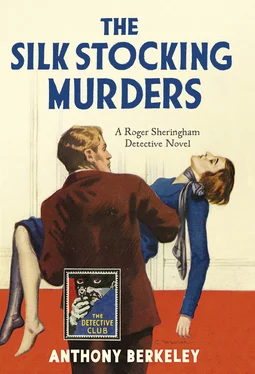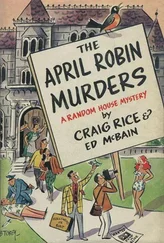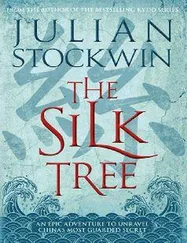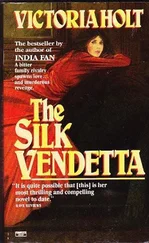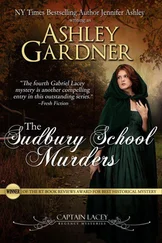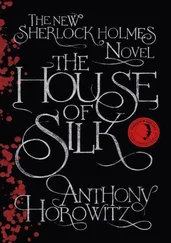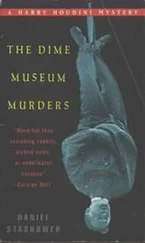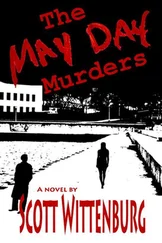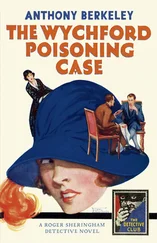‘THE DETECTIVE STORY CLUB is a clearing house for the best detective and mystery stories chosen for you by a select committee of experts. Only the most ingenious crime stories will be published under the THE DETECTIVE STORY CLUB imprint. A special distinguishing stamp appears on the wrapper and title page of every THE DETECTIVE STORY CLUB book—the Man with the Gun. Always look for the Man with the Gun when buying a Crime book.’
Wm. Collins Sons & Co. Ltd., 1929
Now the Man with the Gun is back in this series of Collins Crime Club reprints, and with him the chance to experience the classic books that influenced the Golden Age of crime fiction.
Published by COLLINS CRIME CLUB
An imprint of HarperCollins Publishers Ltd 1 London Bridge Street London SE1 9GF
www.harpercollins.co.uk
First published in Great Britain by The Crime Club by W. Collins Sons & Co. Ltd 1923
Copyright © Estate of Anthony Berkeley 1928
Introduction © Tony Medawar 2017
Cover design © HarperCollins Publishers Ltd 1928, 2017
A catalogue copy of this book is available from the British Library.
This novel is entirely a work of fiction. The names, characters and incidents portrayed in it are the work of the author’s imagination. Any resemblance to actual persons, living or dead, events or localities is entirely coincidental.
All rights reserved under International and Pan-American Copyright Conventions. By payment of the required fees, you have been granted the non-exclusive, non-transferable right to access and read the text of this e-book on screen. No part of this text may be reproduced, transmitted, down-loaded, decompiled, reverse engineered, or stored in or introduced into any information storage and retrieval system, in any form or by any means, whether electronic or mechanical, now known or hereinafter invented, without the express written permission of HarperCollins.
Source ISBN: 9780008216399
Ebook Edition © February 2017 ISBN: 9780008216405
Version: 2016-12-28
TO
A. B. COX
WHO
VERY KINDLY
WROTE THIS BOOK FOR ME
IN HIS SPARE TIME
Contents
Cover
Title Page
Copyright
Dedication
Introduction
I. A LETTER FOR MR SHERINGHAM
II. MR SHERINGHAM WONDERS
III. MISS CARRUTHERS IS DRAMATIC
IV. TWO DEATHS AND A JOURNEY
V. ENTER CHIEF-INSPECTOR MORESBY
VI. DETECTIVE SHERINGHAM, OF SCOTLAND YARD
VII. GETTING TO GRIPS WITH THE CASE
VIII. A VISITOR TO SCOTLAND YARD
IX. NOTES AND QUERIES
X. LUNCH FOR TWO
XI. AN INTERVIEW AND A MURDER
XII. SCOTLAND YARD AT WORK
XIII. A VERY DIFFICULT CASE
XIV. DETECTIVE SHERINGHAM SHINES
XV. MR SHERINGHAM DIVERGES
XVI. ANNE INTERVENES
XVII. AN UNOFFICIAL COMBINATION
XVIII. ‘AN ARREST IS IMMINENT’
XIX. MR SHERINGHAM IS BUSY
XX. ALARMS AND EXCURSIONS
XXI. ANNE HAS A THEORY
XXII. THE LAST VICTIM
XXIII. THE TRAP IS SET
XXIV. THE TRAP IS SPRUNG
XXV. ROUND THE GOOD XXXX
The Detective Story Club
About the Publisher
ANTHONY BERKELEY COX (1893–1971) was a versatile author who wrote under several names. Under his real name, he wrote humorous novels, political commentary and even a comic opera. As A. Monmouth Platts, he wrote a light-hearted thriller involving a vanishing debutante. As Francis Iles, he wrote the groundbreaking psychological crime novels Malice Aforethought (1931) and Before the Fact (1932). And, as Anthony Berkeley, he wrote 14 classic detective stories, many of which feature Roger Sheringham, an amateur investigator who works sometimes with—and sometimes against—Chief Inspector Moresby of Scotland Yard.
In some senses, Anthony Berkeley was Roger Sheringham; at the very least the two have much in common. Roger, like his creator, was the son of a doctor and ‘born in a small English provincial town’. Both went to public school and then to Oxford, where Berkeley achieved a Third in Classics and Roger a Second in Classics and History. Both served in the First World War: Berkeley was invalided out of the army with his health permanently impaired, while Roger was ‘wounded twice, not very seriously’. Roger became a bestseller with his first novel, as did Berkeley, and both men spoke disparagingly of their own fiction while being intolerant of others’ criticism. Against this background, Berkeley’s comment that Sheringham was ‘founded on an offensive person I once knew’ is likely to have been an example of the writer’s often-noted peculiar sense of humour.
Humour, and above all ingenuity, are the hallmark of Berkeley’s crime fiction. While many of his contemporaries concentrated on finding ever more improbable means of dispatching victims and ever more implausible means of establishing an alibi, Berkeley focused on turning established conventions of the crime and mystery genre upside down. Thus the explanation of the locked room in Berkeley’s first Sheringham mystery, The Layton Court Mystery (1925), is absurdly straightforward. In another novel, the official detective is right while the amateur sleuth is wrong. In another, the last person known to have seen the victim alive is , after all, the murderer. Above all, facts uncovered by any of Berkeley’s detectives are almost always capable of more than one explanation and the first deductions they draw are rarely entirely correct. In this respect, Berkeley clearly took some of his inspiration from certain historical crimes, particularly those whose solution has never been clear-cut and where the facts, such as there are, routinely offer more than one possible explanation. The Silk Stocking Murders (1928) is one such title, inspired by the murder in 1925 of a young woman in London by a one-legged man; The Wychford Poisoning Case , which has also been reissued in this Detective Club series, is another.
In all, Roger Sheringham appears in ten novel-length mysteries—one of which Berkeley dedicated to himself—and Sheringham is also mentioned in passing in two other novels, The Piccadilly Murder (1929) and Trial and Error (1937). Perhaps the best-known of the Sheringham novels is The Poisoned Chocolates Case (1929) which, again, is based on a real-life crime. This was the attempt in November 1922 by a disgruntled horticulturist to murder the Commissioner of the Metropolitan Police Service, Brigadier-General Sir William Horwood, by sending him a package of Walnut Whips, laced with either arsenic or strychnine. The poisoning with which Cox’s novel is concerned is investigated not only by the police but by Sheringham and the other members of ‘The Crimes Circle’, a private dining club of criminologists. Each member of the Circle advances a plausible explanation of the poisoning but one by one the solutions fall, including—to the reader’s surprise—the solution proposed by Sheringham. Eventually the mystery is solved by Ambrose Chitterwick, an unassuming and aspergic amateur sleuth whose hobbies include philately and horticulture—tweaking the nose of anyone who remembered that it was a horticulturist who made the attempt to poison Sir William Horwood. As well as being a superb puzzle, with multiple solutions, The Poisoned Chocolates Case is fascinating for the links between the fictional ‘Crimes Circle’ and the Detection Club, which Berkeley had founded as a dining club for crime writers in 1929—the same year that The Poisoned Chocolates Case was published. The Detection Club, at least initially, comprised ‘authors of detective stories which rely more upon genuine detective merit than upon melodramatic thrills’, though that definition has been significantly stretched more than once over the nearly 90 years of the Club’s existence. Over the years, Cox would collaborate with members of the Detection Club on various fundraising ventures, including four round-robin mysteries beginning with The Floating Admiral (1931), whose entertaining sequel— The Sinking Admiral —was published by Collins Crime Club in 2016. And in 2016, playing Berkeley in a posthumous game of detective chess, Martin Edwards, the current President of the Detection Club, proposed a wholly plausible additional solution to the Poisoned Chocolates mystery in a British Library reprint.
Читать дальше
